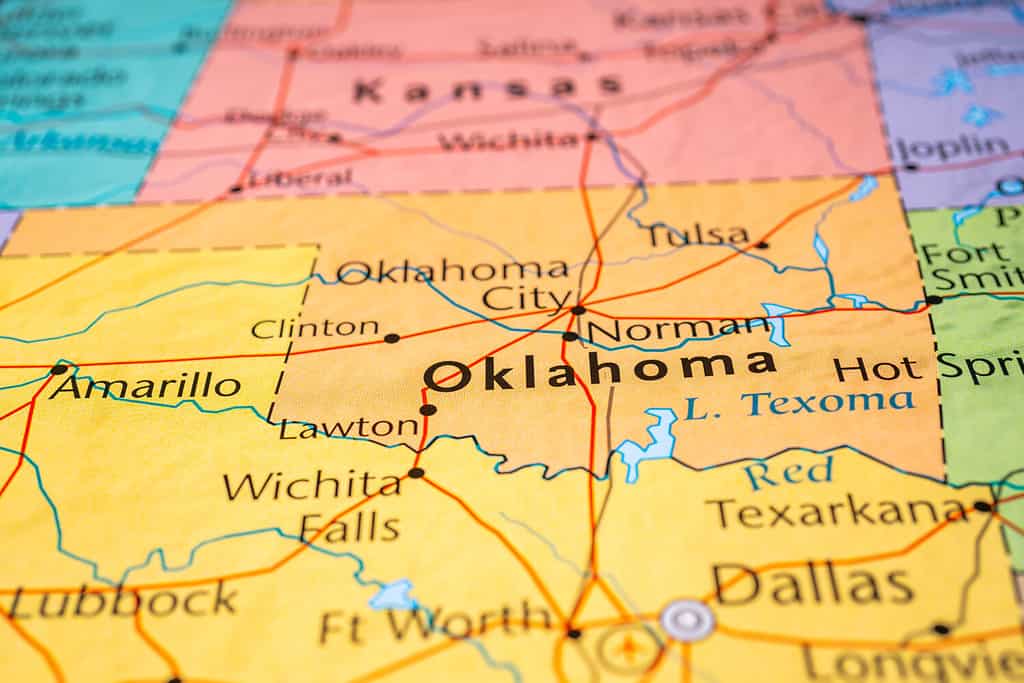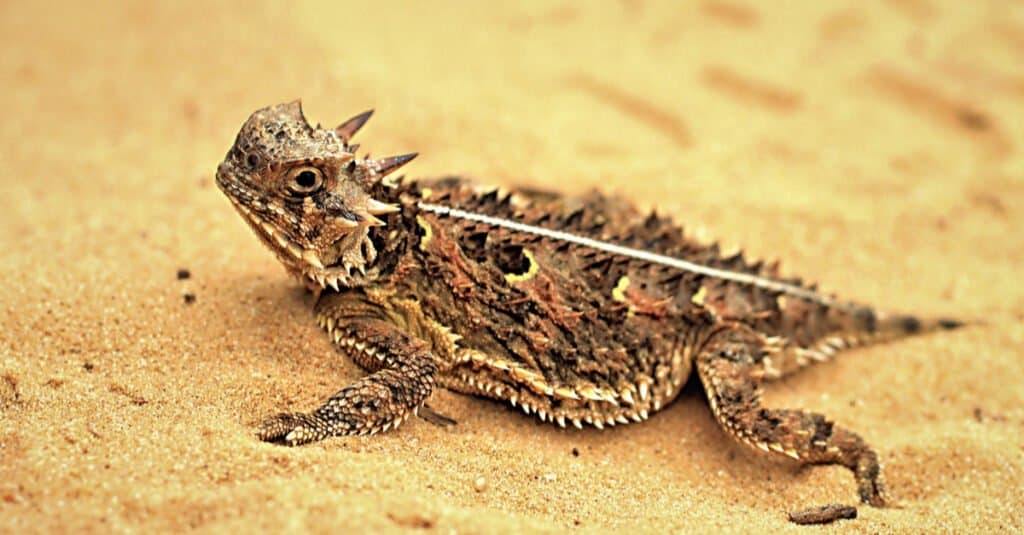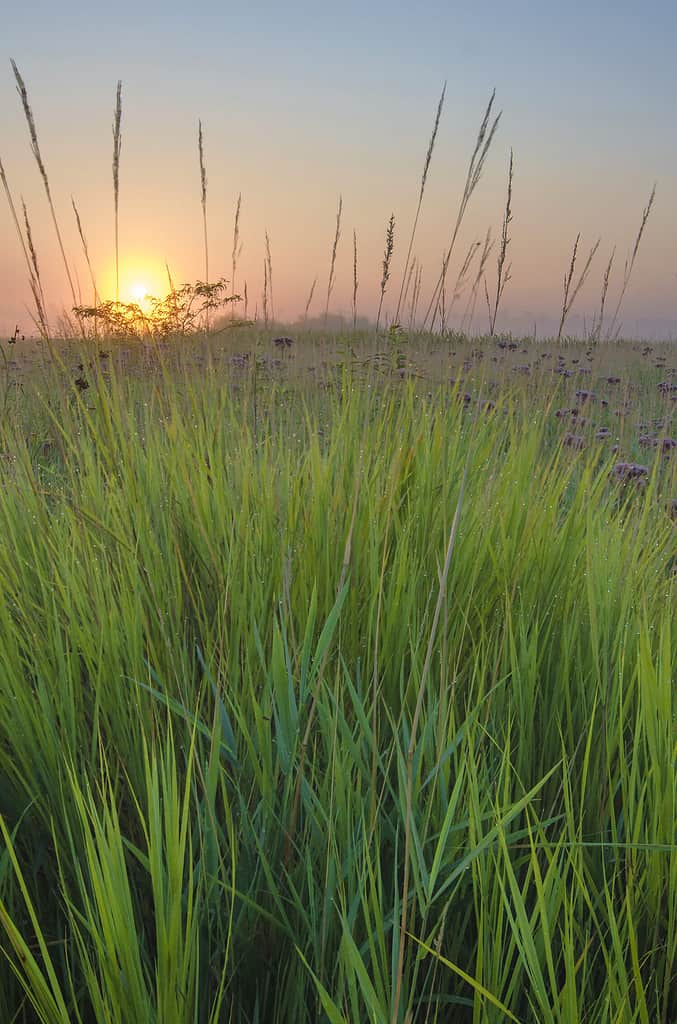Oklahoma! Where the wind comes sweeping down the plain! These iconic lyrics from the Rodgers and Hammerstein musical Oklahoma! capture the essence of a state known for its wide-open spaces and ever-changing skies. Yet, one of the state’s geographical features often goes unnoticed: the remarkable height of Oklahoma. How tall is Oklahoma? The total distance from north to south is 468 miles (753 km). Continue reading to learn more about Oklahoma, from its origin to the wildlife and prairie grasses that call it home.

The total distance from north to south in Oklahoma is 468 miles (753 km).
©Alexander Lukatskiy/Shutterstock.com
Origins
Before European colonization, the region we call Oklahoma was home to various indigenous tribes. Many of these tribes were forcibly relocated by the U.S. government as a result of the Indian Relocation Act of 1830. The land was designated as Indian Territory by the U.S. government. Many indigenous individuals died on the agonizing trek to their new home. With the onset of the American Civil War, the region became a battleground for Confederate and Union forces, further disrupting Native American communities.
After the war, the Reconstruction Treaties led to the establishment of the Five Civilized Tribes’ governments in Indian Territory, which allotted a small amount of land to the Native Americans. The remaining land opened to European settlers in 1899. This resulted in the Oklahoma Land Run and the state’s Sooner nickname. Oklahoma became the 46th U.S. State on November 16, 1907.
Coordinates and Boundaries
Oklahoma’s longest point is on its eastern border with Arkansas and to a lesser extent, Missouri. The eastern border of Oklahoma does not follow any specific latitude. Survey lines and the boundaries agreed upon in historical treaties define it instead. The northern border of Oklahoma closely follows the 37th parallel latitude. The result is an exceptionally uniform border. Interestingly, the 37th parallel serves at the northern border for seven U.S. States: North Carolina, Tennessee, Arkansas, Oklahoma, Texas, New Mexico, and Arizona.
The southern border of Oklahoma is an entirely different story. The twisting and turning Red River forms the southern boundary of the state, creating a jagged border between Oklahoma and Texas. The Red River Boundary Compact of 1999 established this boundary.
Statistically Speaking
In terms of overall size (land area), Oklahoma is the 20th largest state in the United States. It covers an area of approximately 69,899 square miles ((181,038 km2). Oklahoma’s north-to-south extent of approximately 468 miles (753 km) ranks as the fourth longest state in the lower 48 behind Texas, California, and Montana.
Wildlife
Oklahoma is home to the usual suspects plus a couple of unusual critters. White-tail deer are the most common large mammal in the state. Black bears also call Oklahoma home. Oklahoma has a large wild turkey population, and it is a popular destination for turkey hunting. The state is home to two large managed herds of bison at Wichita Mountains Wildlife Refuge in Comanche County and the Tallgrass Prairie Preserve in Osage County. A smaller herd is managed by The Oklahoma Historical Society at the Pawnee Bill Ranch. Coyotes, adaptable predators, are widespread throughout the state. Bobcats are native to Oklahoma and live in forests, while fox squirrels are common in wooded areas and urban environments. In the winter, bald eagles can be spotted around lakes and rivers, where beavers construct their dams and lodges.

Texas horned lizards can squirt blood from their eyes!
©Seth LaGrange/Shutterstock.com
On the more exotic side, armadillos are found in Oklahoma. These small-to-medium-sized mammals can be a nuisance. Armadillos forage for grubs, ants, termites, and even earthworms. It only takes a few armadillos to wreak havoc on a neatly manicured lawn. Another unusual critter that calls Oklahoma home is the Texas horned lizard (Phrynosoma cornutum). Often called horny toads, these smallish reptiles are a protected species. Designated as a species of special concern, it is illegal to kill, capture, sell, or keep a Texas horned lizard as a pet. Fun fact: Texas horned lizards can squirt blood from their eyes! This adaptation is employed as a defense mechanism against predators. And though the idea itself is creepy and a bit frightening, Texas horned lizards are harmless to humans.
Oklahoma Native Prairie Grasses
Oklahoma’s native prairie grasses range from short and stubby to exceptionally tall. This diversity reflects the state’s varied ecosystems. In the west, shorter grasses dominate, featuring low-lying, drought-resistant grasses like blue grama and buffalograss, well-suited to arid conditions. Moving east, a blend of taller and mid-sized grasses prevail. The eastern part of the state supports tallgrass prairies, where majestic species like big bluestem can grow several feet tall. Indiangrass, the official state grass of Oklahoma, grows up to 5 feet (1.5 m) tall. Prairie grasses, once a principal part of Oklahoma’s landscape, now serve as a vivid reminder of Oklahoma’s storied past. Thankfully, conservation efforts are helping to protect and preserve Oklahoma’s native prairie grasses. Across the Great Plains, only 4% of native prairie grasses endure.

Majestic prairie grasses, like big bluestem, are native to Oklahoma and grow several feet high.
©Hank Erdmann/Shutterstock.com
The photo featured at the top of this post is © Paul Brady Photography/Shutterstock.com
Thank you for reading! Have some feedback for us? Contact the AZ Animals editorial team.






